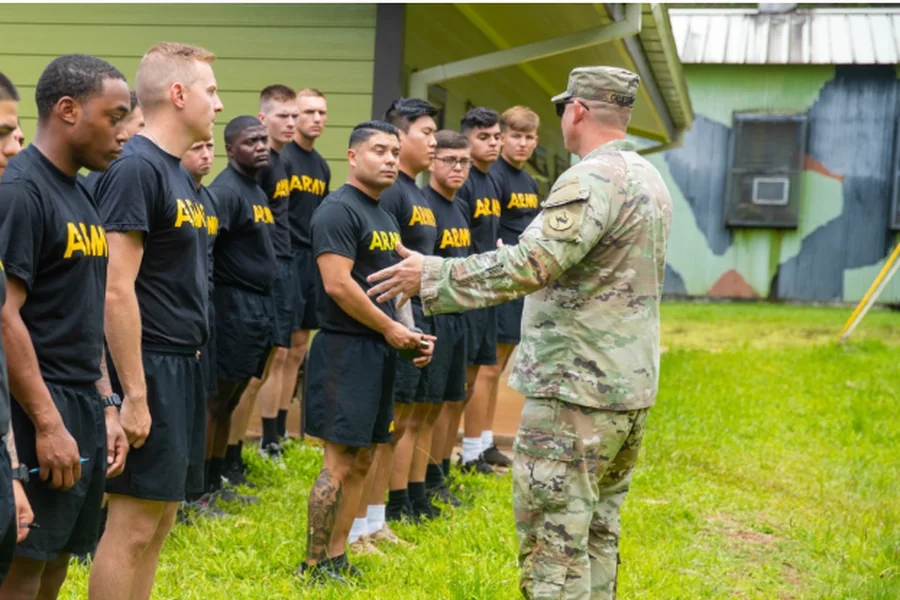When people search for Army height and weight standards, they ask what it takes to be ready for service.
But behind the charts, the cutoffs, and the military fitness tests lies a deeper story — one of discipline, identity, and transformation.
In this article, we’ll go beyond the numbers and explore the full meaning of Army height weight standards — how they’ve evolved, why they matter, and how they reflect the core values of the United States Army.
We’ll also take a deep look at:
- What the current height and weight standards are
- How body composition is measured through neck and waist measurements
- Why soldiers must meet these demands — not just for looks, but for performance
- And how these rules impact recruits emotionally and mentally
Let’s dive into the real story behind the standard.
Understanding the Army Fitness Requirements
The United States Army has long upheld strict height and weight standards—not just for Appearance but also for combat readiness, uniform fit, and mission success.
Unlike civilian life, where body image can be subjective, in the Army, your body must perform — under pressure, heat, and stress.
Here’s a breakdown of the current Army height and weight standards :
Male Army Height & Weight Standards (Max Allowed)
| HEIGHT (INCHES) | MAX WEIGHT – 18% BODY FAT | MAX WEIGHT – 24% BODY FAT |
| 60 (5’0″) | 120 lbs | 132 lbs |
| 65 (5’5″) | 145 lbs | 160 lbs |
| 70 (5’10”) | 170 lbs | 188 lbs |
| 75 (6’3″) | 195 lbs | 215 lbs |
Female Army Height & Weight Standards (Max Allowed)
| HEIGHT (INCHES) | MAX WEIGHT – 20% BODY FAT | MAX WEIGHT – 30% BODY FAT |
| 60 (5’0″) | 112 lbs | 124 lbs |
| 65 (5’5″) | 138 lbs | 153 lbs |
| 70 (5’10”) | 164 lbs | 181 lbs |
| 75 (6’3″) | 189 lbs | 209 lbs |
“It’s not about being perfect. It’s about being prepared.”
That kind of mindset defines every soldier — from boot camp to battlefield.
The Science Behind the Standard
The U.S. Army doesn’t use BMI alone—instead, it relies on a height and weight chart combined with body circumference measurements to assess body fat levels more accurately than BMI can.
Here’s how the process works:
| STEP | WHAT HAPPENS |
| Step 1 | Compare height and weight to official chart |
| Step 2 | Measure neck and waist |
| Step 3 | Calculate body fat percentage |
| Step 4 | Determine if within allowed limits |
This method helps ensure that muscular individuals aren’t unfairly penalized while maintaining strict health and readiness standards.
“Muscle matters. But so does mobility.”
That emotional truth is part of what makes the Army unique among military branches.
Why These Standards Matter
Meeting Army height weight standards isn’t just about fitting into a uniform — it’s about surviving in harsh conditions, carrying gear, and staying alert under pressure.
Here’s how the standards tie into real-world readiness:
| REQUIREMENT | PURPOSE |
| Weight control | Prevent injury, maintain endurance |
| Neck/waist measures | Track unhealthy fat gain over time |
| Uniform fit | Ensures proper gear for mission success |
| Physical tests | Prepares for ACFT (Army Combat Fitness Test) |
That honesty sets the Army apart — an institution and a culture of excellence.
The Emotional Side of Meeting Standards
For many new recruits, meeting the Army height and weight standards is more than just a checklist item—it’s a personal battle.
Some are naturally built for the job, while others struggle with body image, confidence, and even shame before meeting the mark.
One former soldier shared:
“I cried after getting flagged for weight. I thought I was strong enough. Turns out, I had to get stronger — mentally too.”
That emotional depth is woven into everything the Army teaches — strength isn’t just physical. It’s psychological, spiritual, and deeply rooted in self-respect.
Army Height Weight vs. Other Branches
While all military branches have standards, the Army’s approach is uniquely tied to function and form — especially with the introduction of the ACFT (Army Combat Fitness Test), which rewards agility, endurance, and power.
Here’s a quick comparison:
| BRANCH | MALE MAX BODY FAT | FEMALE MAX BODY FAT | NOTES |
| Army | 24% | 30% | Uses tape test + ACFT |
| USMC | 18% | 26% | Focuses heavily on leanness |
| Navy | 22% | 33% | Tape-based system used similarly |
| Air Force | 20% | 29% | Appearance and function both considered |
While other services may allow slightly higher thresholds, the Army emphasizes total readiness — something that builds character, not just physique.
Frequently Asked Questions (FAQ)
Q1: What are the Army height weight standards?
A: They vary by height and gender, but males must stay below 24% body fat, females under 30%, using a height and weight chart and tape test.
Q2: Is there a minimum height requirement?
A: No official minimum, but you must be tall enough to meet the lowest weight range without falling below healthy thresholds.
Q3: Can you join the Army if you’re overweight?
A: If you exceed the height and weight chart, you may be placed on a weight loss program and could be denied entry if you are not compliant.
Q4: Do tattoos affect Army height weight standards?
A: Tattoos don’t affect weight, but they do play a role in grooming and professionalism — which ties into overall military standards.
Q5: Are there exceptions for athletes or muscular builds?
A: Soldiers exceeding the weight chart due to high muscle mass may qualify via tape measurement and body fat calculation.
Q6: Where can I find the official Army body fat calculator?
A: Access the latest version on the Official U.S. Army Recruiting Website or through myArmyLife.
Looking Ahead: The Future of Army Fitness
As society changes, so do the ways the Army approaches fitness, nutrition, and health.
There’s an ongoing discussion about:
- Updating the charts for modern body types
- Incorporating more functional testing
- Supporting mental health during weight-loss efforts
- Creating inclusive standards while keeping the edge
Whatever comes next, one thing remains clear:
The Army height weight standards are more than just data — they symbolize pride, preparation, and purpose.
Final Thoughts: More Than Just a Chart
The Army height weight standards are more than just guidelines — they’re a gateway to belonging, a test of will, and a reflection of the Army ethos: Every inch counts. Every pound matters.
From recruits trying to cut seasoned veterans to staying sharp, these rules shape lives — not just bodies.
That’s why the Army isn’t just about being big. It’s about being ready.
Follow Army Updates Online
Stay updated with the latest news, policies, and training tips from the Army community:
| PLATFORM | ACCOUNT LINK |
| Official U.S. Army Site | GoArmy.com |
| U.S. Army Instagram | |
| U.S. Army Facebook | |
| YouTube | U.S. Army Recruitment Channel |



